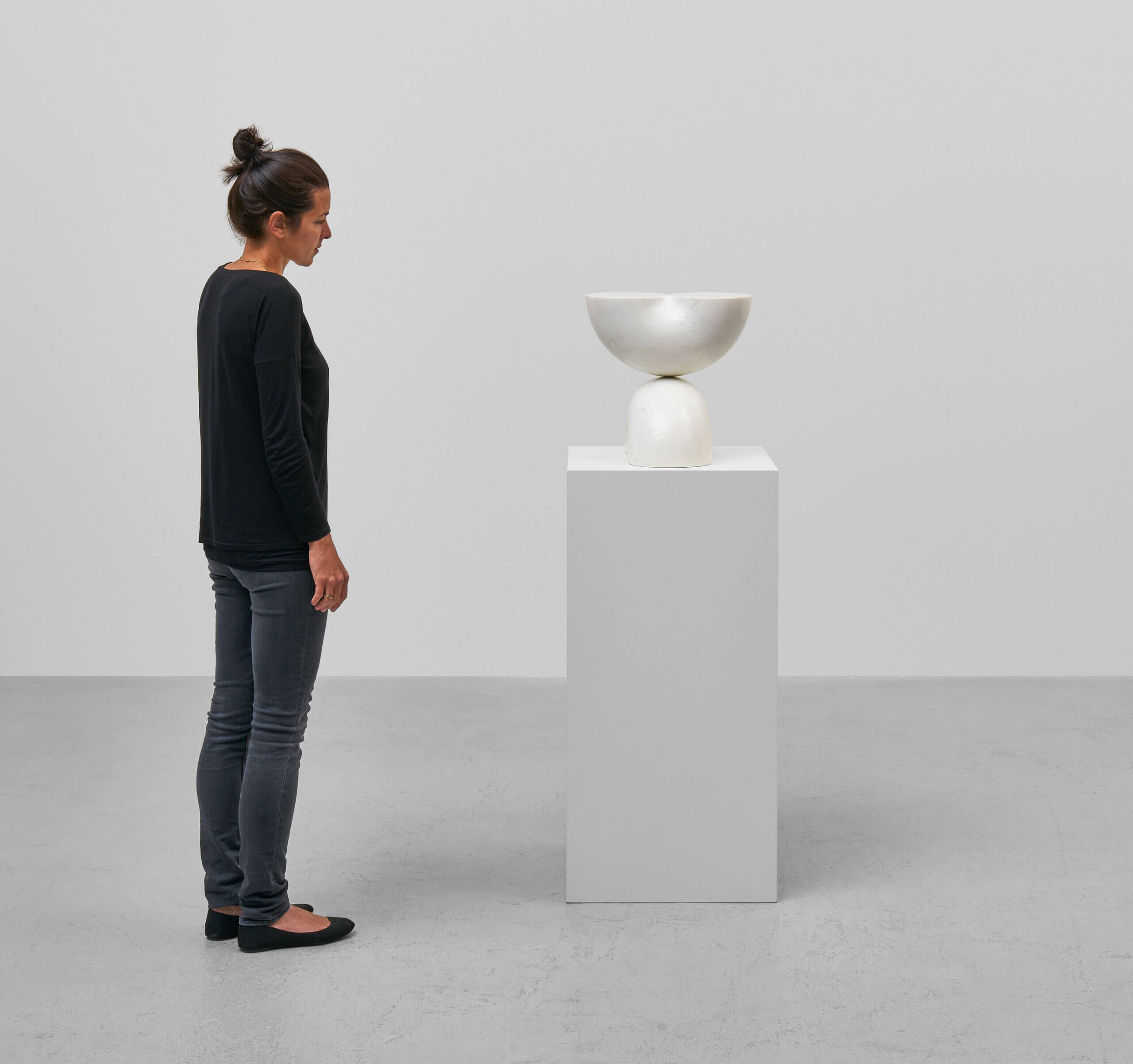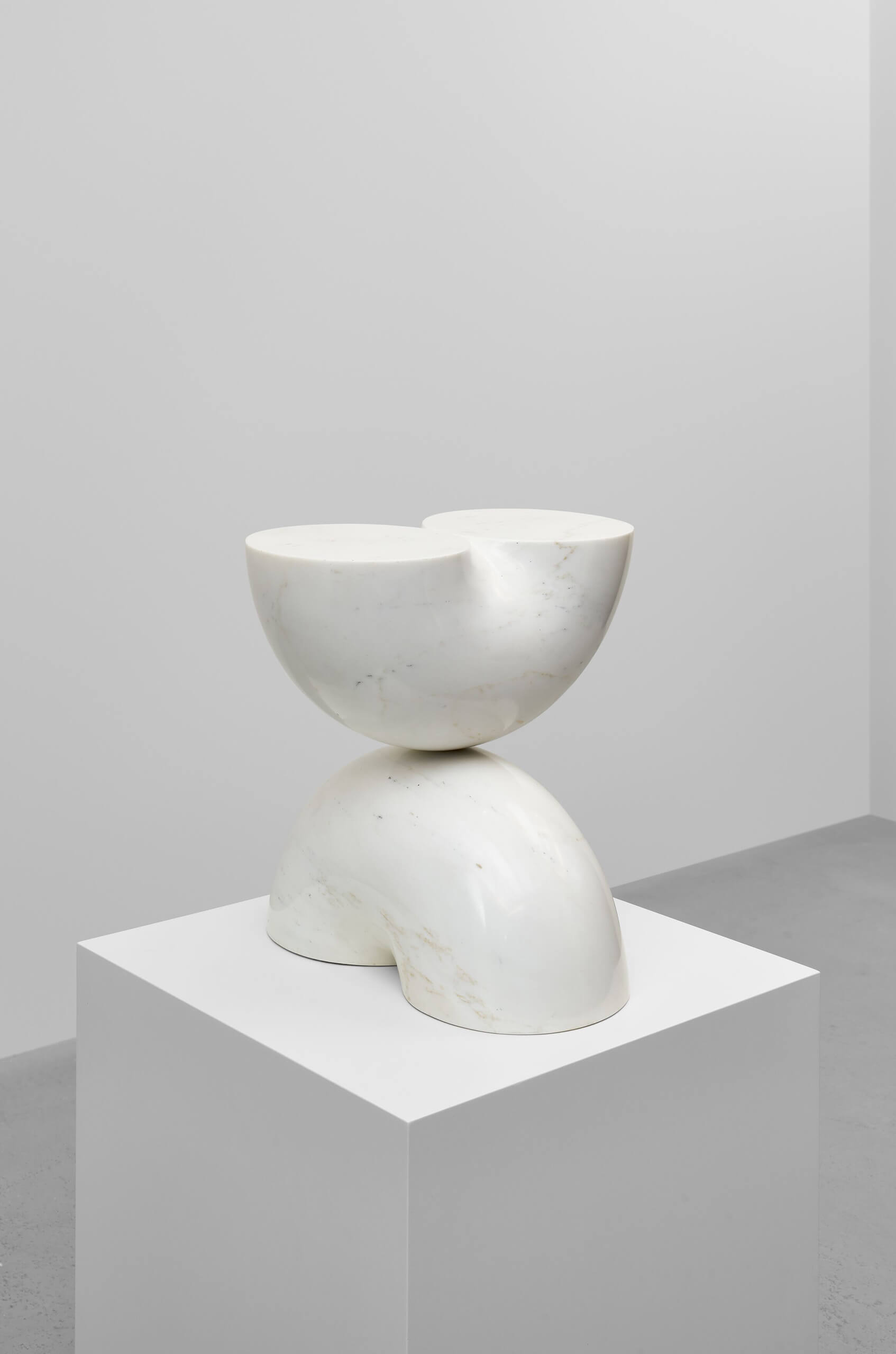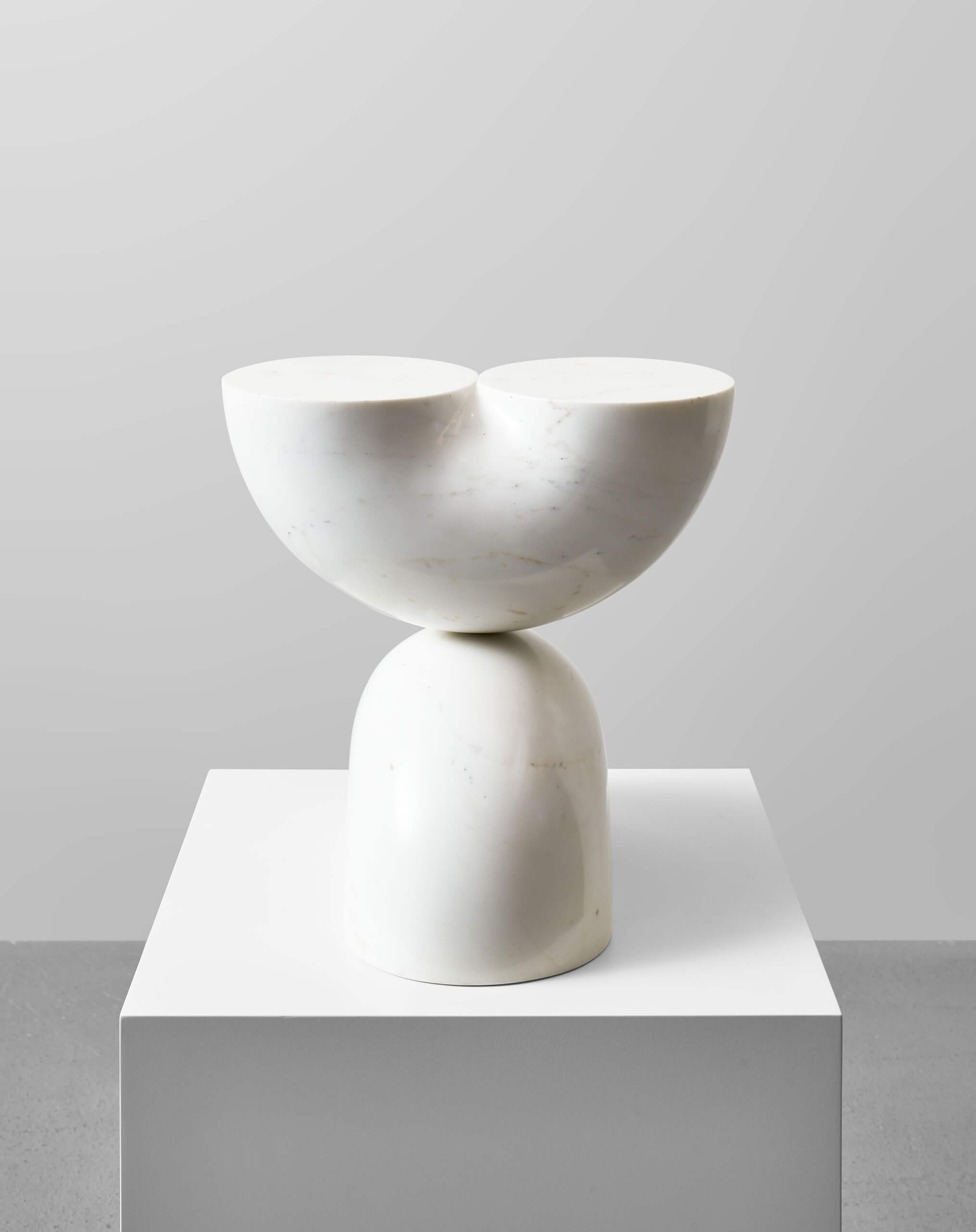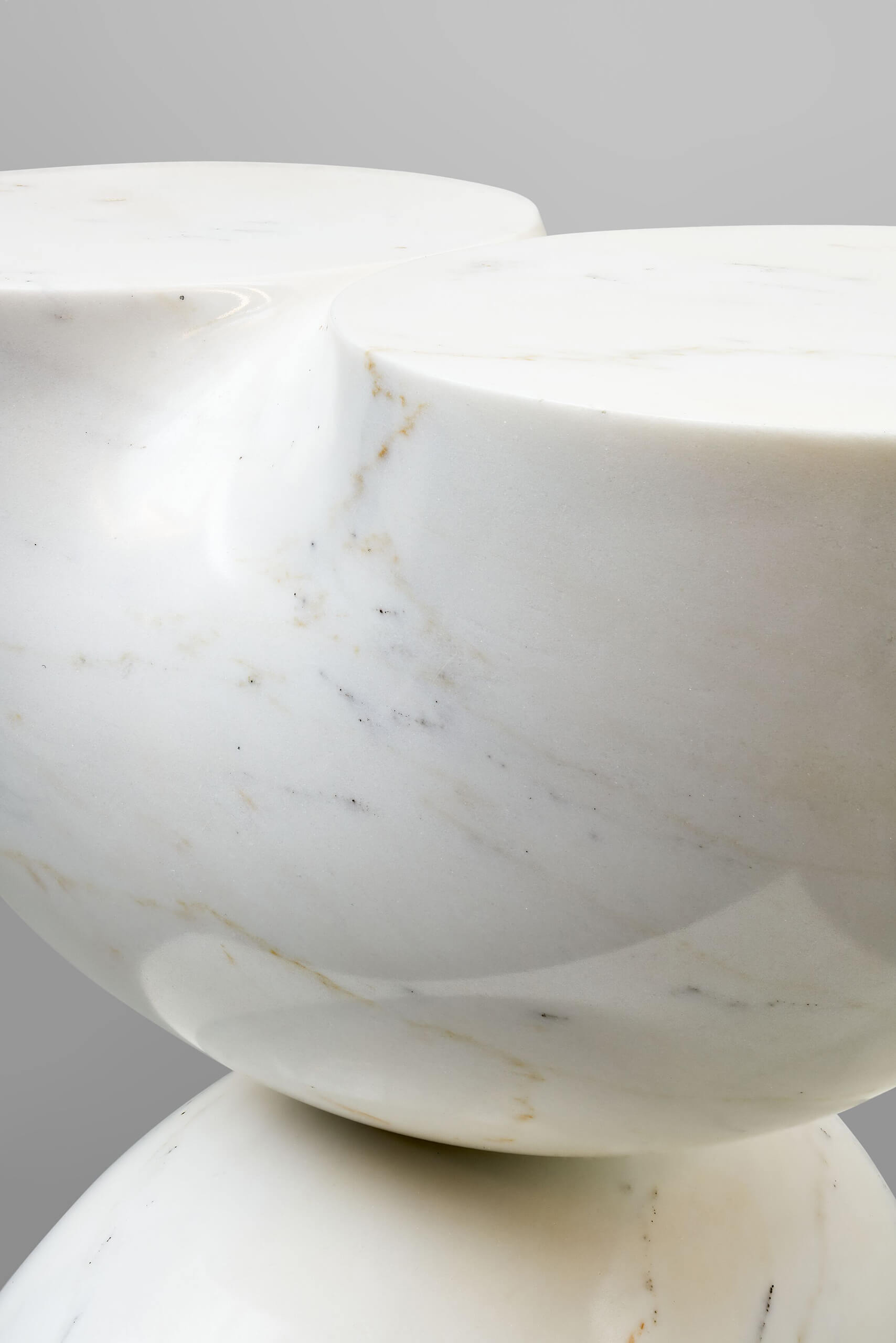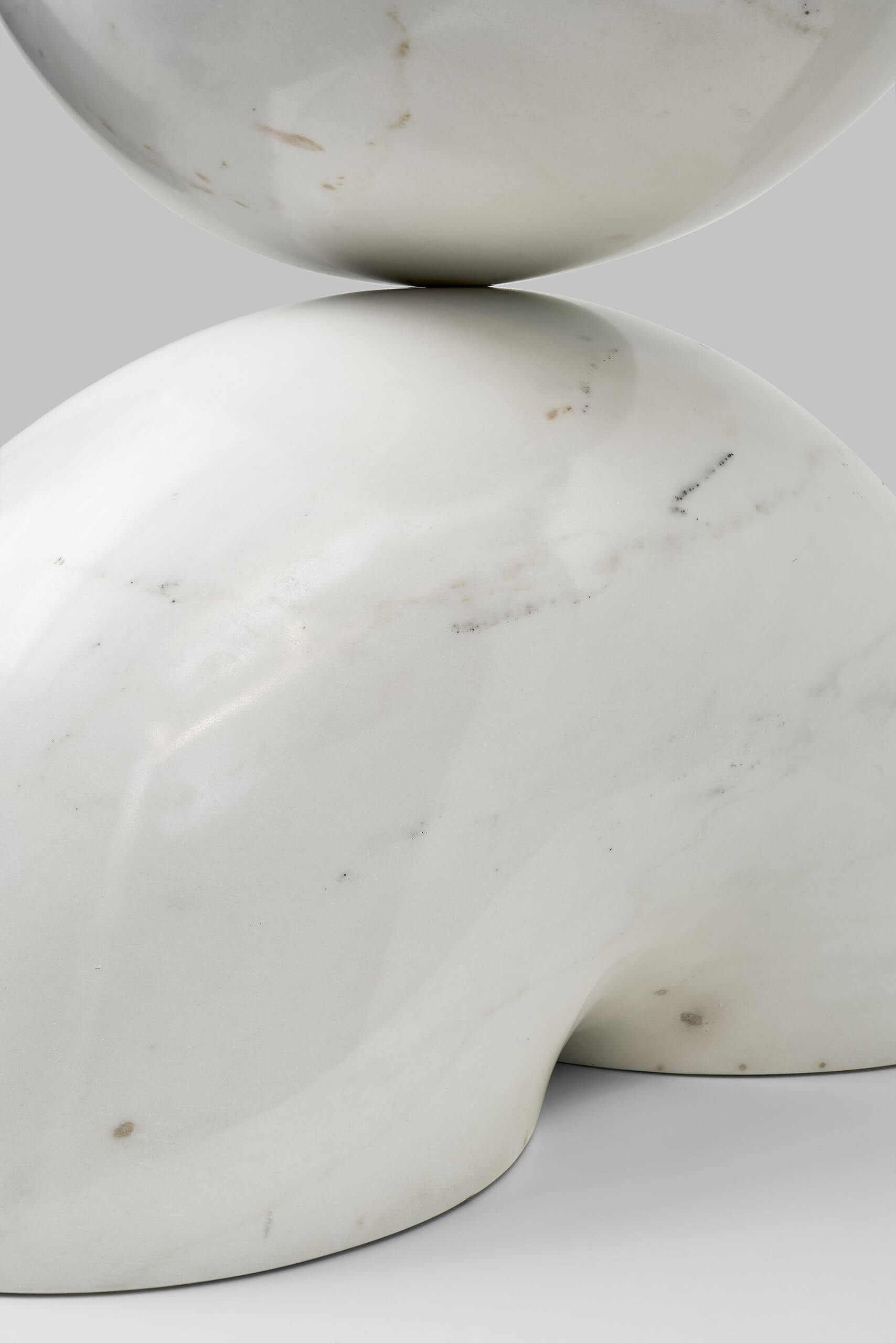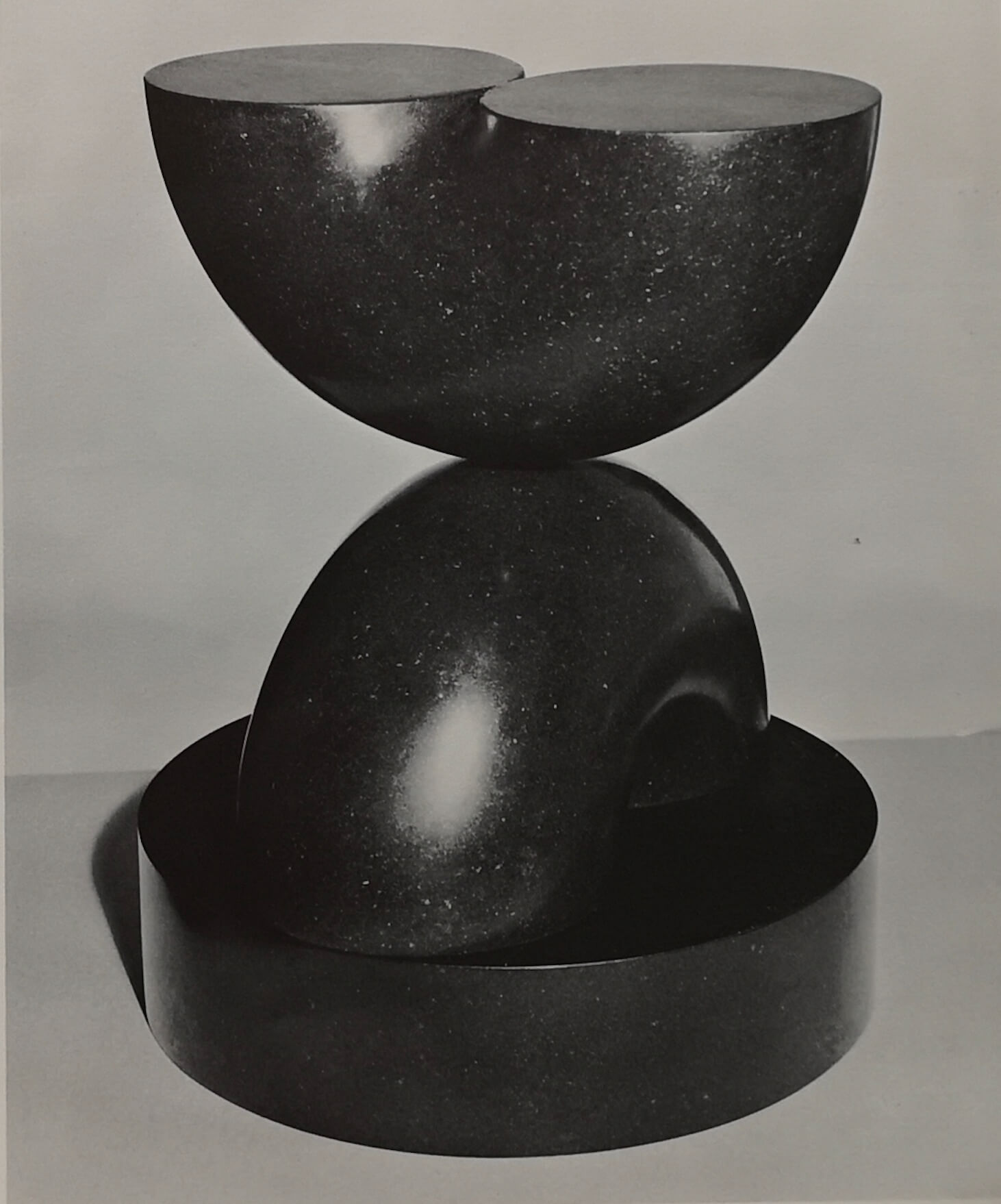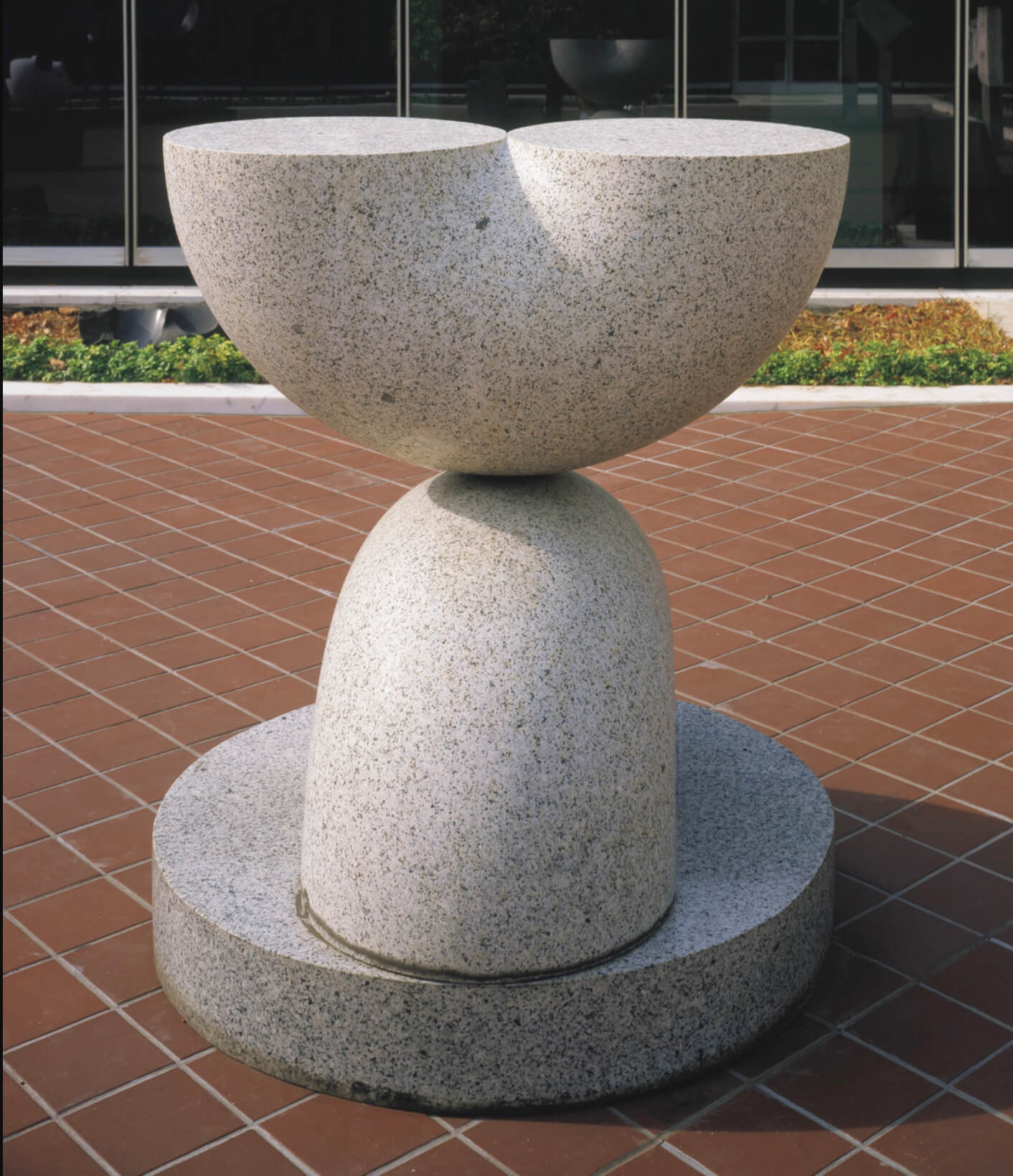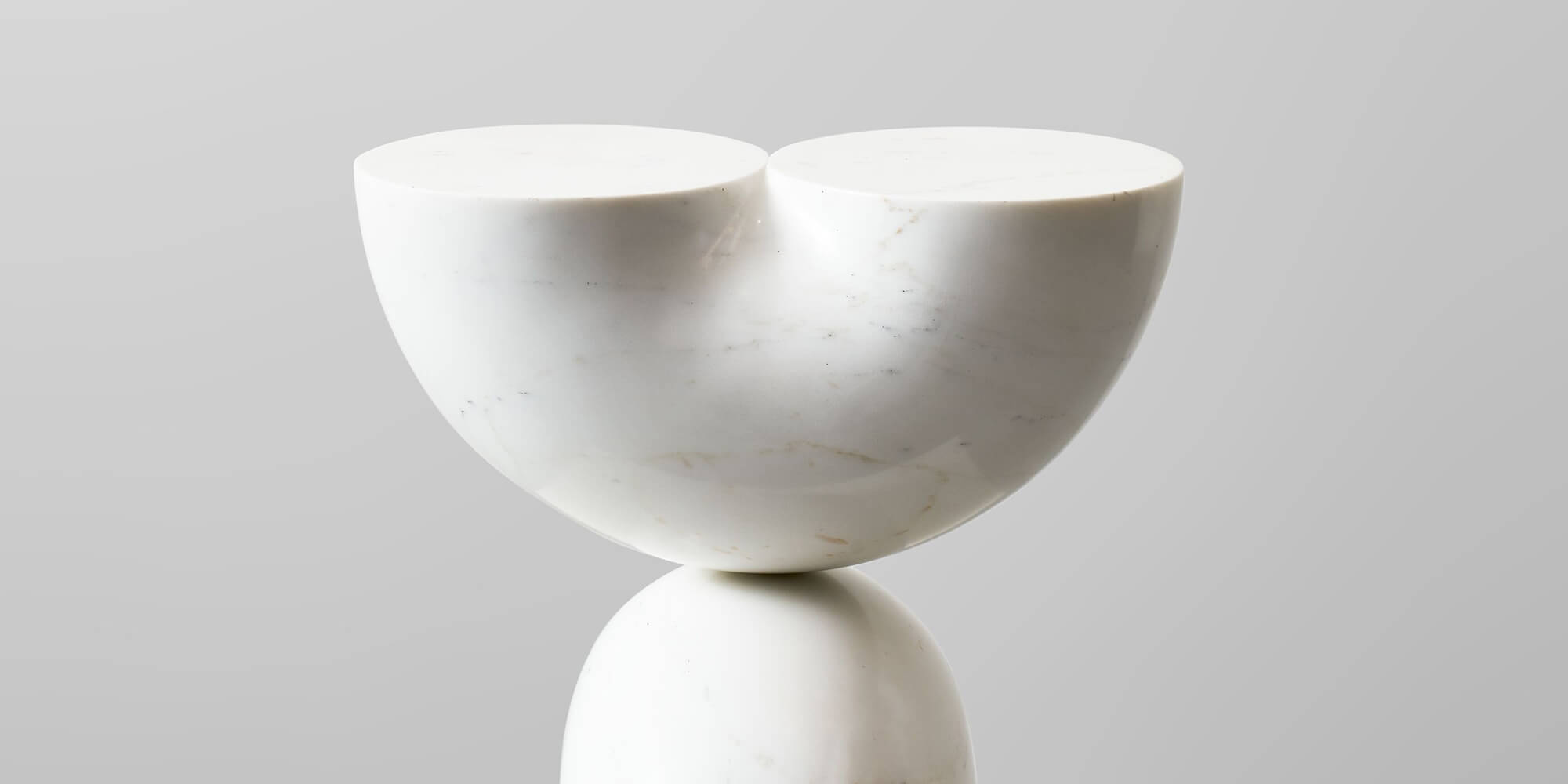
Max Bill
konstruktion aus einem kreisring (Construction from a Ring)
konstruktion aus einem kreisring (Construction from a Ring)
1942 White marble Unique marble variant 39.2 x 39.9 x 39.9 cm / 15 ⅜ x 15 ¾ x 15 ¾ in
Recognized across applied arts and design, Max Bill is one of the most prominent and innovative figures of Concrete and Constructivist art in the twentieth century, and his contributions still resonate today among younger generations of artists attracted by the reduction characteristic of his works. In his formative years, from 1927 to 1929, Bill studied at the Bauhaus under the great László Moholy-Nagy, Paul Klee, Wassily Kandinsky, Josef Albers, Walter Gropius, and Oskar Schlemmer and the tenets of these practitioners would inform Bill’s interdisciplinary work for the rest of his life.
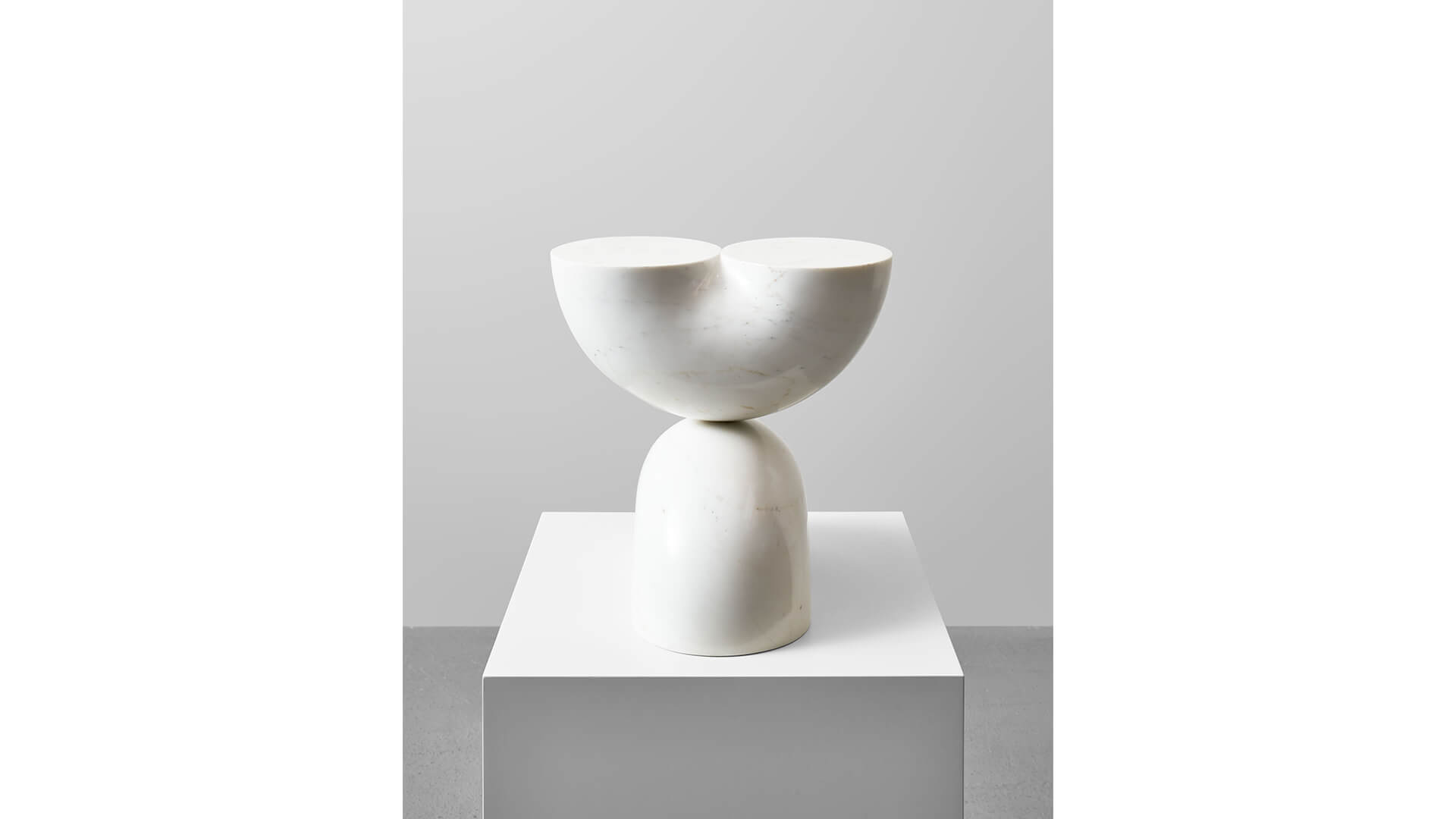
Throughout the 1930s, Bill became associated with artistic groups including Allianz in Zurich and Abstraction-Création in Paris, which united abstract artists of the avant-garde, including Theo van Doesburg, whose theory of Concrete art inspired Bill to lay its foundations in Switzerland. Broadening and refining van Doesburg’s definition of Concrete art, Bill embraced rational principles of mathematics, resulting in ‘konstruktion aus einem kreisring’ (Construction from a Ring) (1942), a poetic example of calculated space, line and matter carved out of white marble.
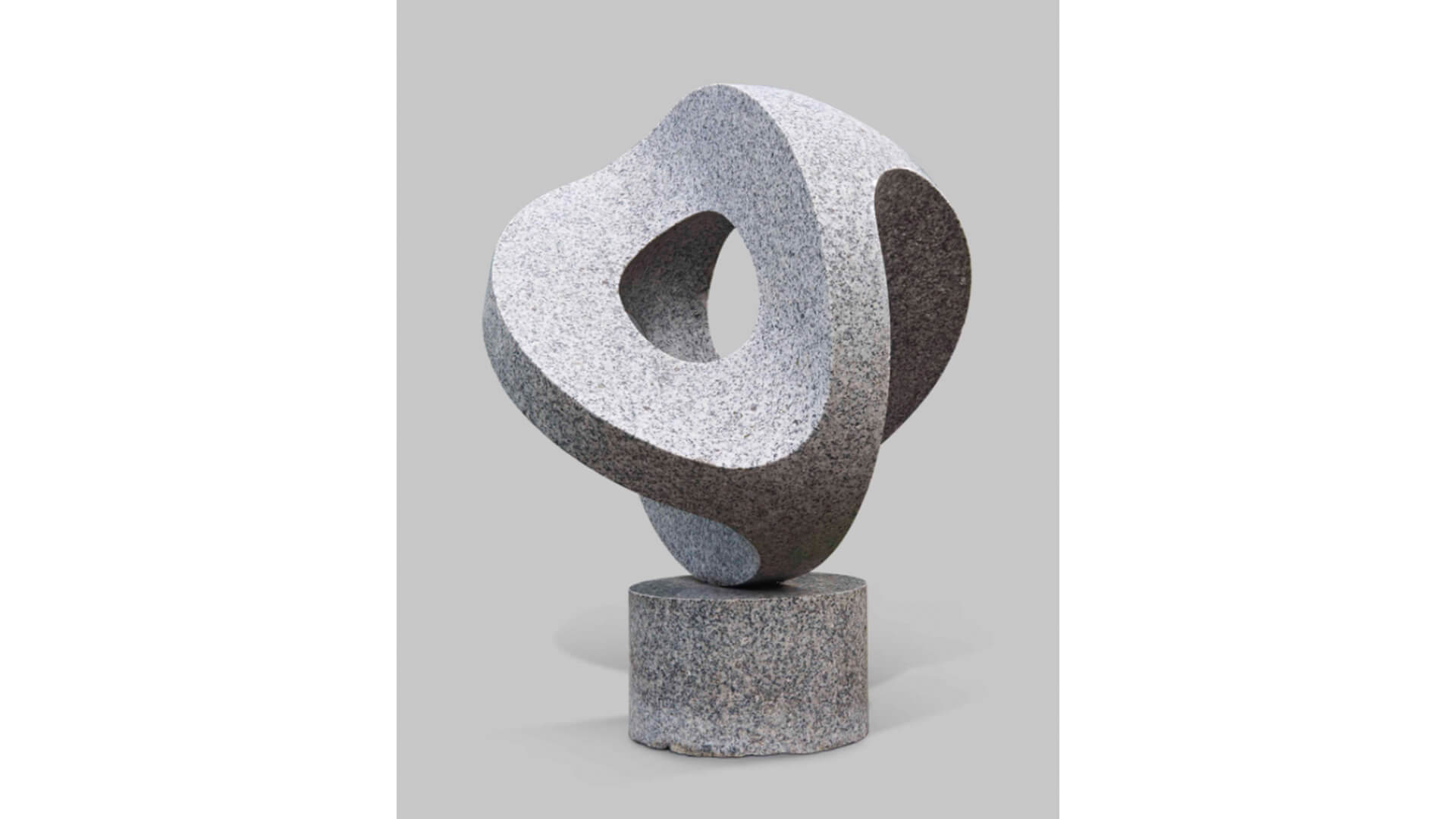
Here, a horn torus appears bisected and re-joined as two turned forms, their smooth polished contours elegantly balanced on an axis. Bill summons sacred geometry as the horn torus represents the solid revolution of a sphere and, as visible in its planar top, two perfect circles. This elemental shape, which appeared in his sculpture as early as 1937, constitutes the simplicity and immensity of Bill’s systematic practice, in which a geometric theme can unfold into multiple variations. [Fig. 1]
Max Bill, konstruktion (Construction), 1937 Grey granite 125 x 95 x 95 cm / 49 1/4 x 37 3/8 x 37 3/8 in Private Collection
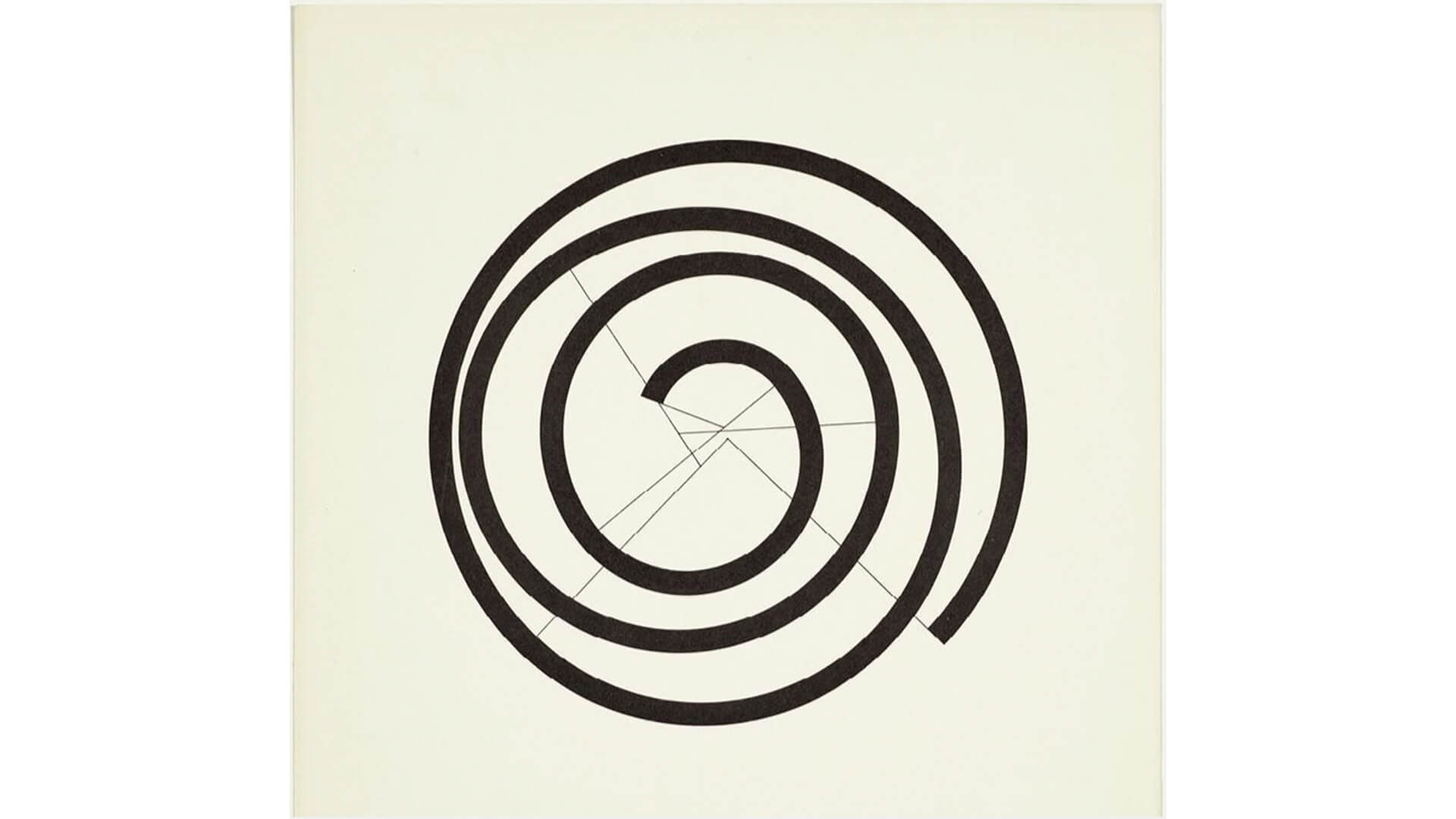
Bill began exploring systematic series in 1935, manifesting in ‘Fifteen variations on a single theme’, which illustrates the conversion of an equilateral triangle as it develops outwards into a spiral, deftly articulating his ideology. [Fig. 2] ‘Far from creating a new formalism,’ he insisted, an art based on the principles of mathematics ‘can yield us something far [more] transcending since they not only embody form as beauty, but also form in which institutions or ideas have taken visible substance’. [1]
Max Bill, Variation 15 from Quinze variations sur un même thème (Fifteen Variations on a Single Theme), 1935-1938 Suite of lithographs 32 x 30 cm / 12.4 x 12 in (each) Daimler Art Collection, Stuttgart-Möhringen/DE
Evolving from a plaster model created in 1942, ‘Construction from a Ring’ was the first fully realised version of the sculpture, followed by iterations in black granite and pink granite, resulting in six known stone productions in varying scale, some composed with a disk-like base, which can be found in the collections of the Albright-Knox Art Gallery, New York, and the Art Institute of Chicago. [Figs. 3 and 4]
Max Bill, konstruktion aus einem kreisring (Construction from a Ring), 1942 (executed 1963) Granite 139.7 x 121.92 x 121.92 cm / 55 x 48 x 48 in Albright-Knox Art Gallery, Buffalo NY
Max Bill, konstruktion aus einem kreisring (Construction from a Ring), 1942 (executed 1964) Black Swedish granite 50 x 40 x 40 cm / 19 5/8 x 15 3/4 x 15 3/4 in Art Institute of Chicago, Chicago IL
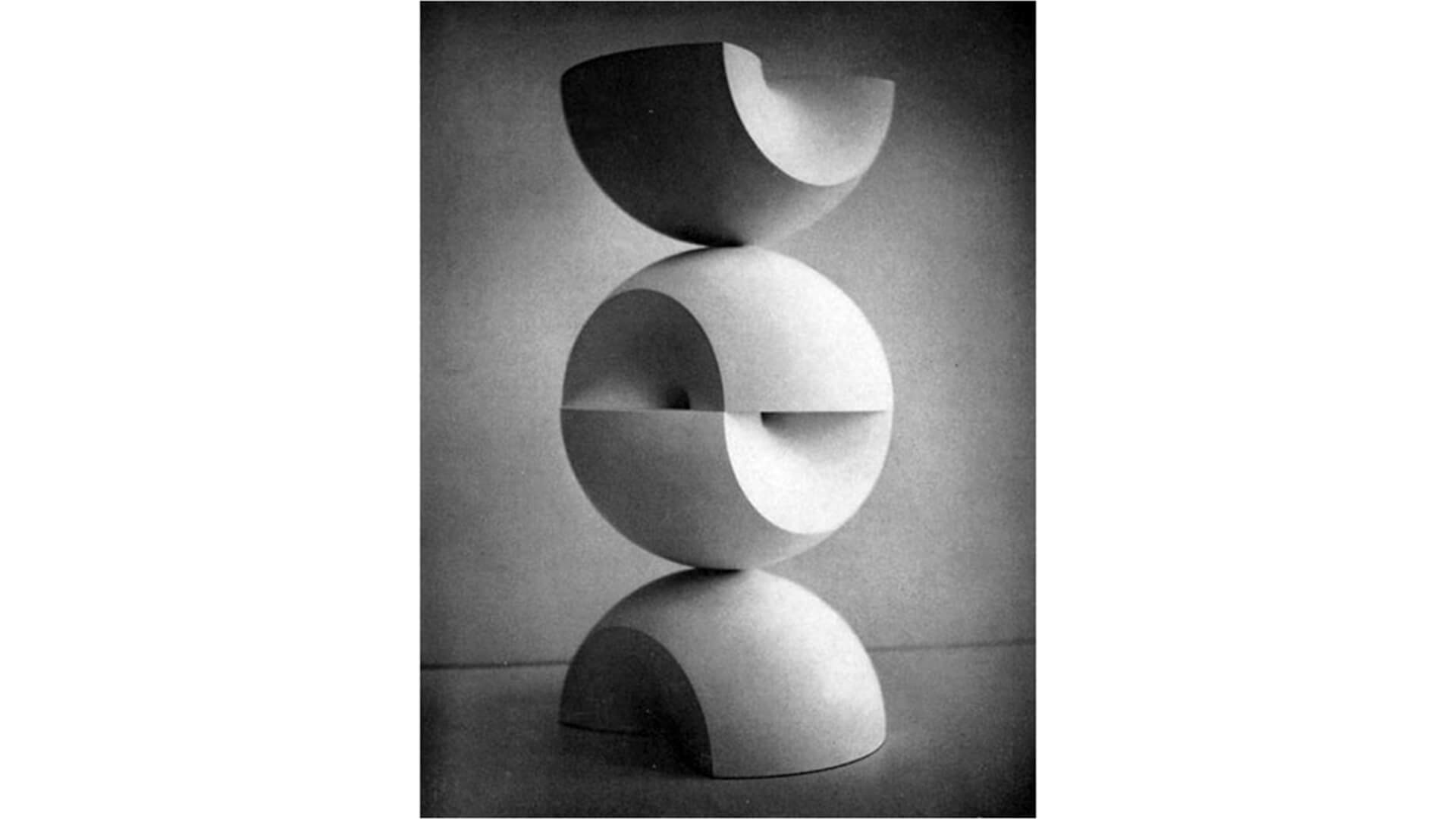
True to his practice of evolving systems, Bill revisited this form in subsequent additive variations, including ‘Construction from Two Rings’ (1965), which, in its repeated forms, effectively conjures Constantin Brancusi’s ‘Endless Column’ (1918). [Fig. 5] Ultimately making its debut in ‘50 Jahre Bauhaus’ (50 Years of Bauhaus), held at the Württembergischer Kunstverein, Stuttgart, in 1968, Bill’s white marble ‘Construction from a Ring’ exemplifies and celebrates the underlying principles of logic, reason and intellectual rigor that characterise his oeuvre and legacy.
Max Bill, konstruktion aus zwei kugelförmigen ring (Construction from Two Rings) c. 1966 Medium and dimensions not available Created for the Carborundum Company
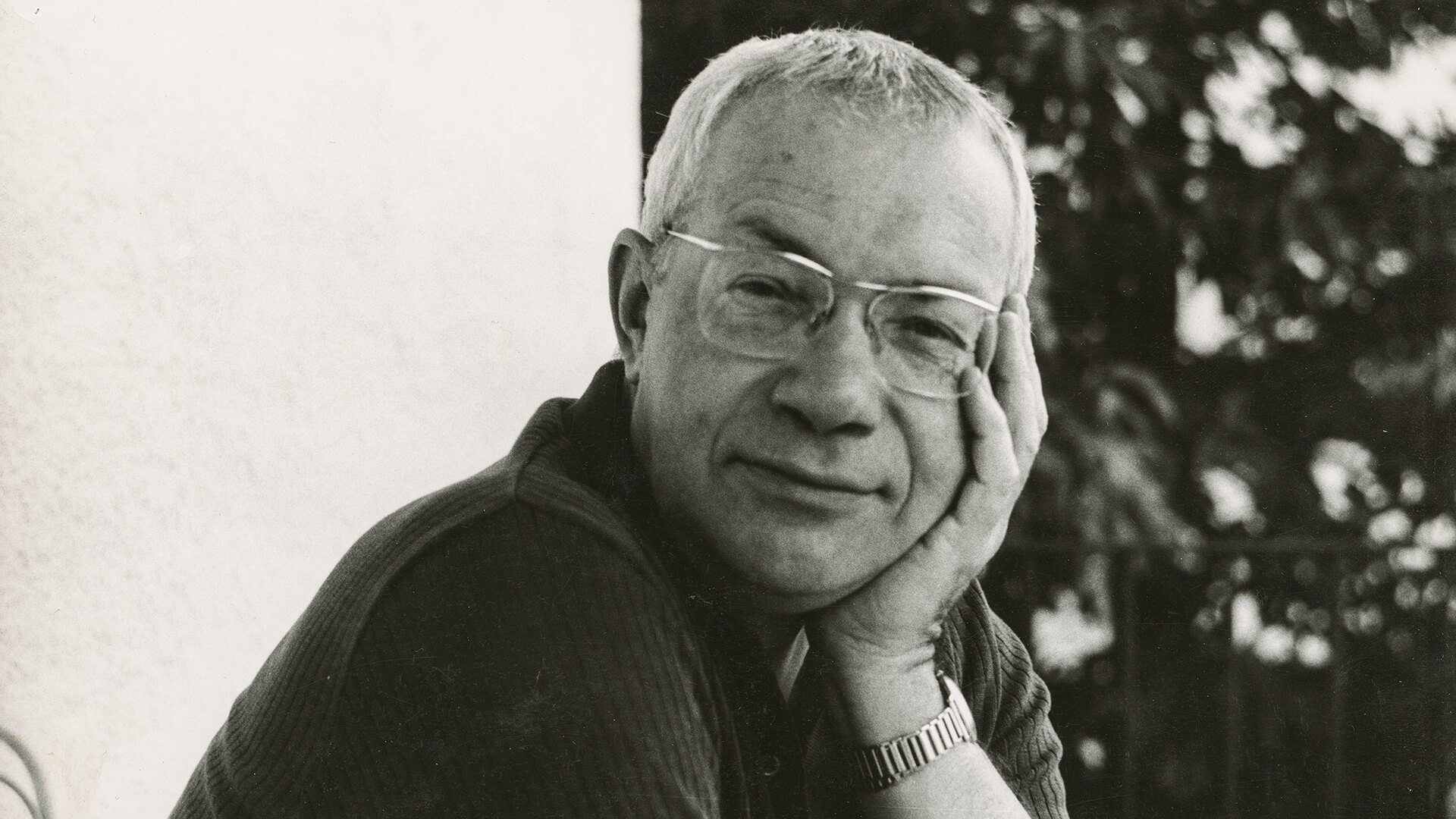
Max Bill was a great Swiss polymath: an artist, architect, industrial designer, graphic designer, and teacher. He attended the Bauhaus where he was taught by Josef Albers, László Moholy-Nagy, Paul Klee, Wassily Kandinsky and Oskar Schlemmer. Bill remained closely associated with the Bauhaus school and was a key figure in developing and propagating its principles, as a guest lecturer at the Kunstgewerbeschule Zürich and as a co-founder and first rector of the Ulm School of Design.
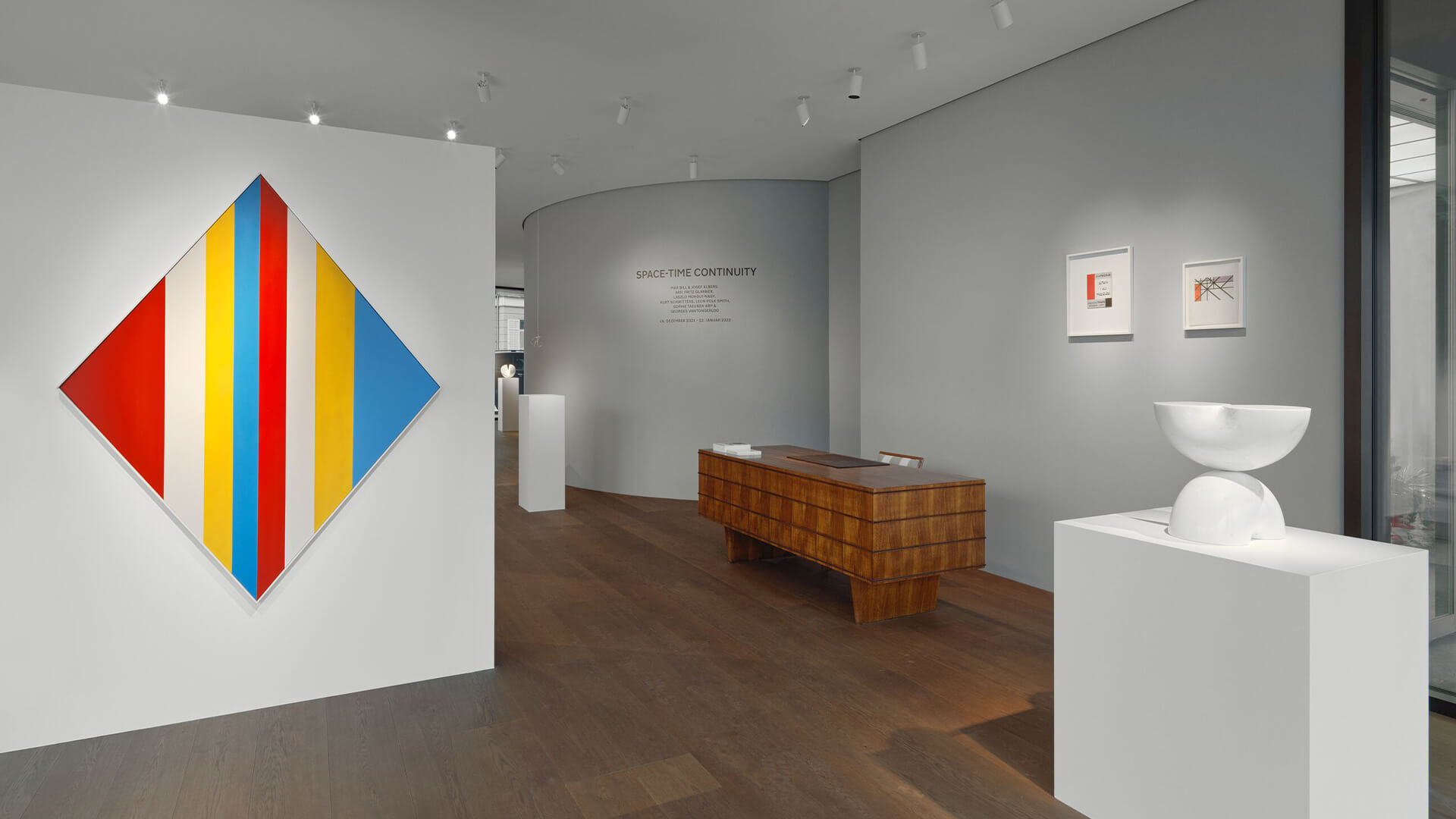
Hauser & Wirth Zurich, Bahnhofstrasse 1
‘konstruktion aus einem kreisring (Construction from a Ring)’ is on view as part of the exhibition ‘space-time continuity’ at the gallery’s new space on Bahnhofstrasse 1 which will examine the dialogue between Max Bill and a group of his contemporaries who explored a similar territory to his own art and ideas. The artists featured in this exhibition alongside Max Bill include Josef Albers, Hans Arp, László Moholy-Nagy, Kurt Schwitters, Fritz Glarner, Sophie Taeuber-Arp and Georges Vantongerloo amongst others.
[1] Max Bill, 'Die mathematische denkweise in der kunst unserer ziet', first published in 'Werk', No. 3, 1949, Winthertur.
Artwork: Max Bill, konstruktion aus einem kreisring (Construction from a Ring), 1942 © 2021 ProLitteris, Zurich. Courtesy the max bill georges vantongerloo foundation and Hauser & Wirth. Collection Angela Thomas Schmid, Zumikon [Fig. 1] Max Bill, konstruktion (Construction), 1937 © Private Collection [Fig. 2] Max Bill, Variation 15 from Quinze variations sur un même thème (Fifteen Variations on a single theme), 1935 – 1938 © VG Bild-Kunst, Bonn 2021. Courtesy Daimler Art Collection, Stuttgart-Möhringen/DE [Fig. 3] Max Bill, konstruktion aus einem kreisring (Construction from a Ring), 1942 (executed 1963) © Estate of Max Bill / Artists Rights Society (ARS), New York / ProLitteris, Zurich. Courtesy Albright-Knox Art Gallery, Buffalo NY [Fig. 4] Max Bill, konstruktion aus einem kreisring (Construction from a Ring), 1942 (executed 1964) © Estate of Max Bill / Artists Rights Society (ARS), New York / ProLitteris, Zurich. Courtesy Art Institute of Chicago, Chicago IL [Fig. 5] Max Bill, konstruktion aus zwei kugelförmigen ring (Construction from Two Rings), c. 1966 © Estate of Max Bill / Artists Rights Society (ARS), New York / ProLitteris, Zurich.
